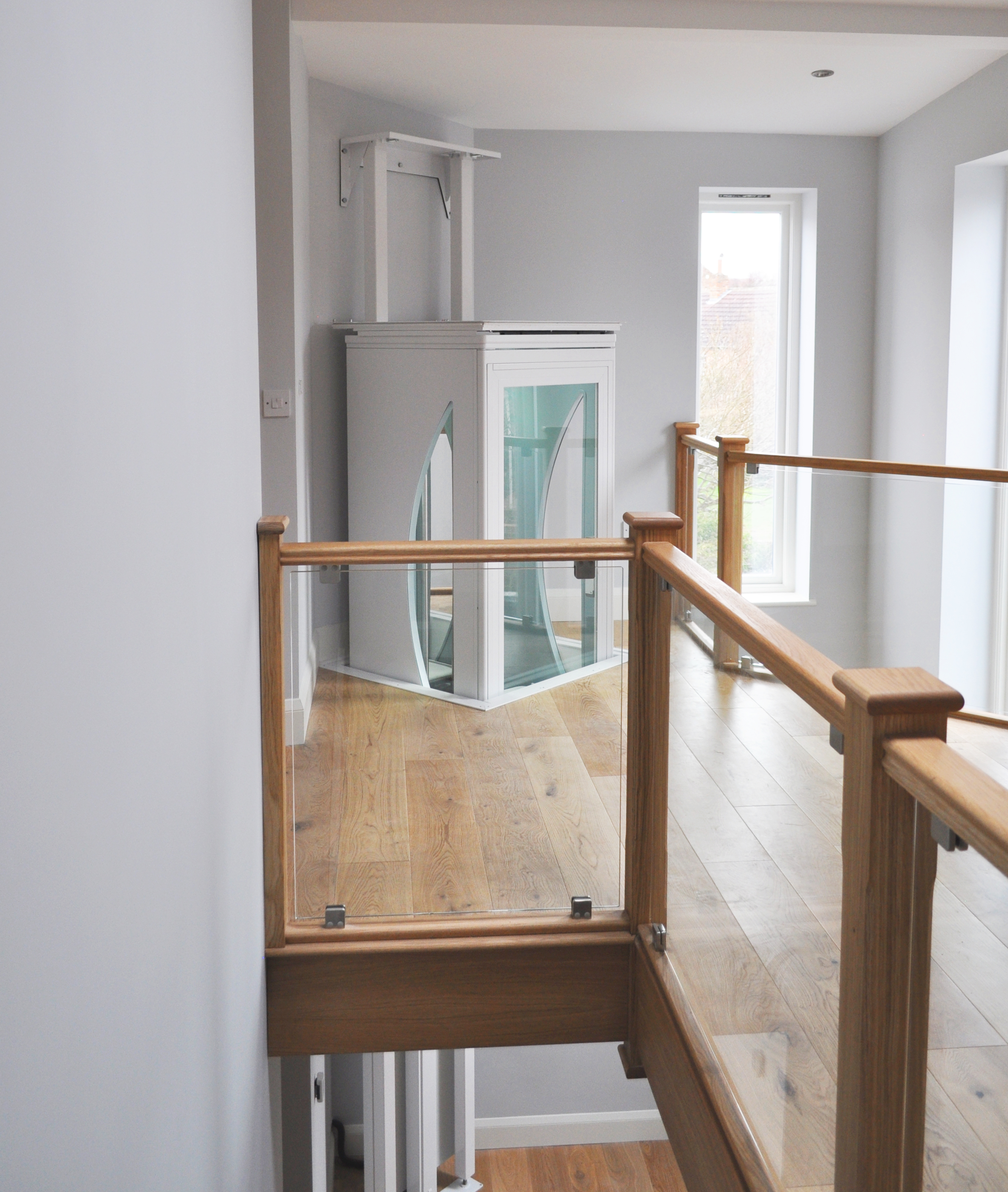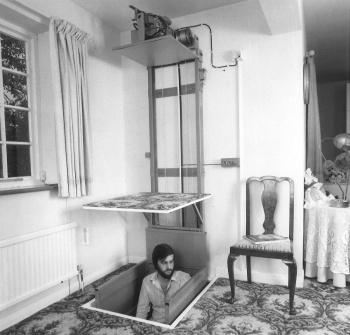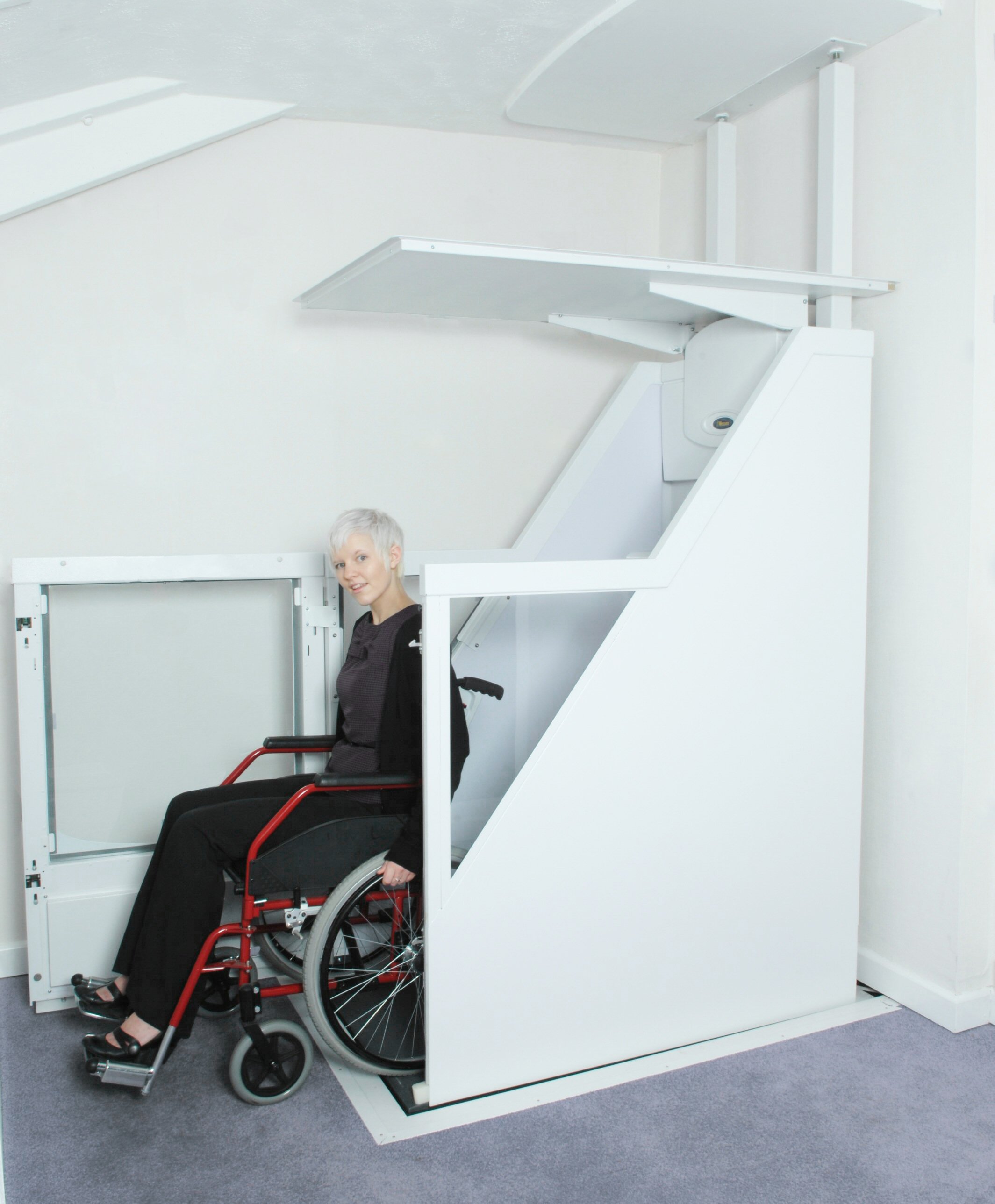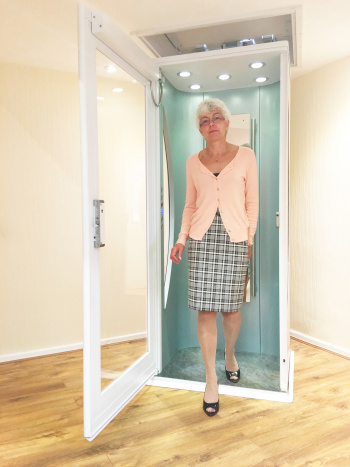Through-Floor Lifts
Contents |
[edit] Introduction
Through-Floor Lifts (sometimes Through Floor Lifts not hyphenated, Through Floor Home Lifts or simply Home Lifts) are a type of domestic home lift whose design lends itself to home living. Simple in design, they consist of a lift car, a track and an aperture cut into the ceiling on the lower floor, or the floor on the upper floor.
[edit] Early Through-Floor Lifts
Some of the first through-floor lifts were developed in the mid 1900's. They were very different from the one's we have today, not having any of the safety features that standards like BS 5900 have now introduced.
However, the mechanisms and basic function of these early lifts are the same as today.
[edit] Through-Floor Lifts Today
There are a wide range of manufacturers who produce through-floor lifts. They have always been known as through-floor lifts to people who work with them (such as Occupational Therapists and those in the industry), but are now more commonly simply included in the umbrella of 'home lifts'.
Historically, through-floor lifts were used predominantly by wheelchair users, but have more recently been taking on the stair lift market, as smaller through-floor lifts (or standing through-floor lifts) are produced.
[edit] Smaller Through-Floor Lifts
Often sold as the 'Stairlift Alternative', smaller through-floor lifts are characterised by a footprint small enough to have minimal impact on the home living space. Many other benefits are often mentioned;
- Quick and easy to install.
- Keeps the staircase free of stairlift obstruction.
- Minimal building work required.
[edit] Large Through-Floor Lifts
Generally produced to meet the demand of heavier wheelchairs or to accommodate multiple passengers, these through-floor lifts can reach dimensions of up to 2m sq.
[edit] Related articles on Designing Buildings Wiki
- A brief history of lifts over the years.
- Considerations When Installing a Residential Lift.
- Disabled access lifts.
- Hoists.
- Home lifts.
- Lifting device.
- Lifting platform.
- Lift Standards: EN 81-20 and EN 81-50.
- Lifts.
- Lift shaft.
- Liftway.
- Low pit lifts.
- The science of lifts.
- The world's fastest lifts.
- Wheelchair platform stairlifts.
Featured articles and news
Key points for construction at a glance with industry reactions.
Functionality, visibility and sustainability
The simpler approach to specification.
Architects, architecture, buildings, and inspiration in film
The close ties between makers and the movies, with our long list of suggested viewing.
SELECT three-point plan for action issued to MSPs
Call for Scottish regulation, green skills and recognition of electrotechnical industry as part of a manifesto for Scottish Parliamentary elections.
UCEM becomes the University of the Built Environment
Major milestone in its 106-year history, follows recent merger with London School of Architecture (LSE).
Professional practical experience for Architects in training
The long process to transform the nature of education and professional practical experience in the Architecture profession following recent reports.
A people-first approach to retrofit
Moving away from the destructive paradigm of fabric-first.
International Electrician Day, 10 June 2025
Celebrating the role of electrical engineers from André-Marie Amperè, today and for the future.
New guide for clients launched at Houses of Parliament
'There has never been a more important time for clients to step up and ...ask the right questions'
The impact of recycled slate tiles
Innovation across the decades.
EPC changes for existing buildings
Changes and their context as the new RdSAP methodology comes into use from 15 June.
Skills England publishes Sector skills needs assessments
Priority areas relating to the built environment highlighted and described in brief.
BSRIA HVAC Market Watch - May 2025 Edition
Heat Pump Market Outlook: Policy, Performance & Refrigerant Trends for 2025–2028.
Committing to EDI in construction with CIOB
Built Environment professional bodies deepen commitment to EDI with two new signatories: CIAT and CICES.
Government Grenfell progress report at a glance
Line by line recomendation overview, with links to more details.
An engaging and lively review of his professional life.
Sustainable heating for listed buildings
A problem that needs to be approached intelligently.
50th Golden anniversary ECA Edmundson apprentice award
Deadline for entries has been extended to Friday 27 June, so don't miss out!
CIAT at the London Festival of Architecture
Designing for Everyone: Breaking Barriers in Inclusive Architecture.
Mixed reactions to apprenticeship and skills reform 2025
A 'welcome shift' for some and a 'backwards step' for others.






























